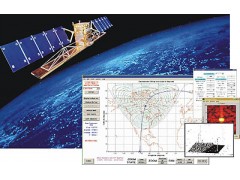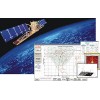RADARSIM®SBR is a comprehensive system and signal level design and analysis tool for Space-based Radar (SBR) applications. Radar signal performance is accurately predicted by simulating the complete mission scenario from a global perspective. Pulse waveform generation, antenna illumination, electromagnetic propagation to and from all targets and clutter, target and clutter backscatter, SBR orbital and target motion, as well as return signal processing and detection processes are all digitally implemented with high precision and fidelity.
This design and performance tool can be used as total development-cycle benchmarking tool - from Concept Study to Final Acceptance Testing. RADARSIM®SBR provides a meaningful and effective solution to the significant and cost-prohibitive problems generally associated with real-world evaluation of any space-based system.
RADARSIM®SBR was originally developed by Sicom Systems Ltd. for the Department of National Defence to evaluate SBR performance in theatre and wide area defence applications. For these applications, the general mission objective is the detection of slow moving ground targets such as tanks and jeeps, as well as airborne targets such as fighter aircraft and intercontinental ballistic missiles (ICBMs).
The primary objective of RADARSIM®SBR is to provide a high-precision, real-world performance evaluation capability for advanced radar signal processors (RSP) that are being incorporated in today's SBR. This tool includes processing algorithms such as pulse-Doppler, synthetic aperture radar (SAR), space-time adaptive processing (STAP) and displaced phase centre antenna (DPCA) processing. These STAP and DPCA algorithms make use of multiple antenna apertures and adaptive processing to reject the strong clutter returns that otherwise would make slow moving ground targets invisible to the radar. The tool can also be used to assess and trade-off competing sensor and orbit designs. Developed since inception as a generalized, radar, design modeling tool, RADARSIM®SBR can also be used to evaluate many other SBR applications.
RADARSIM®SBR





